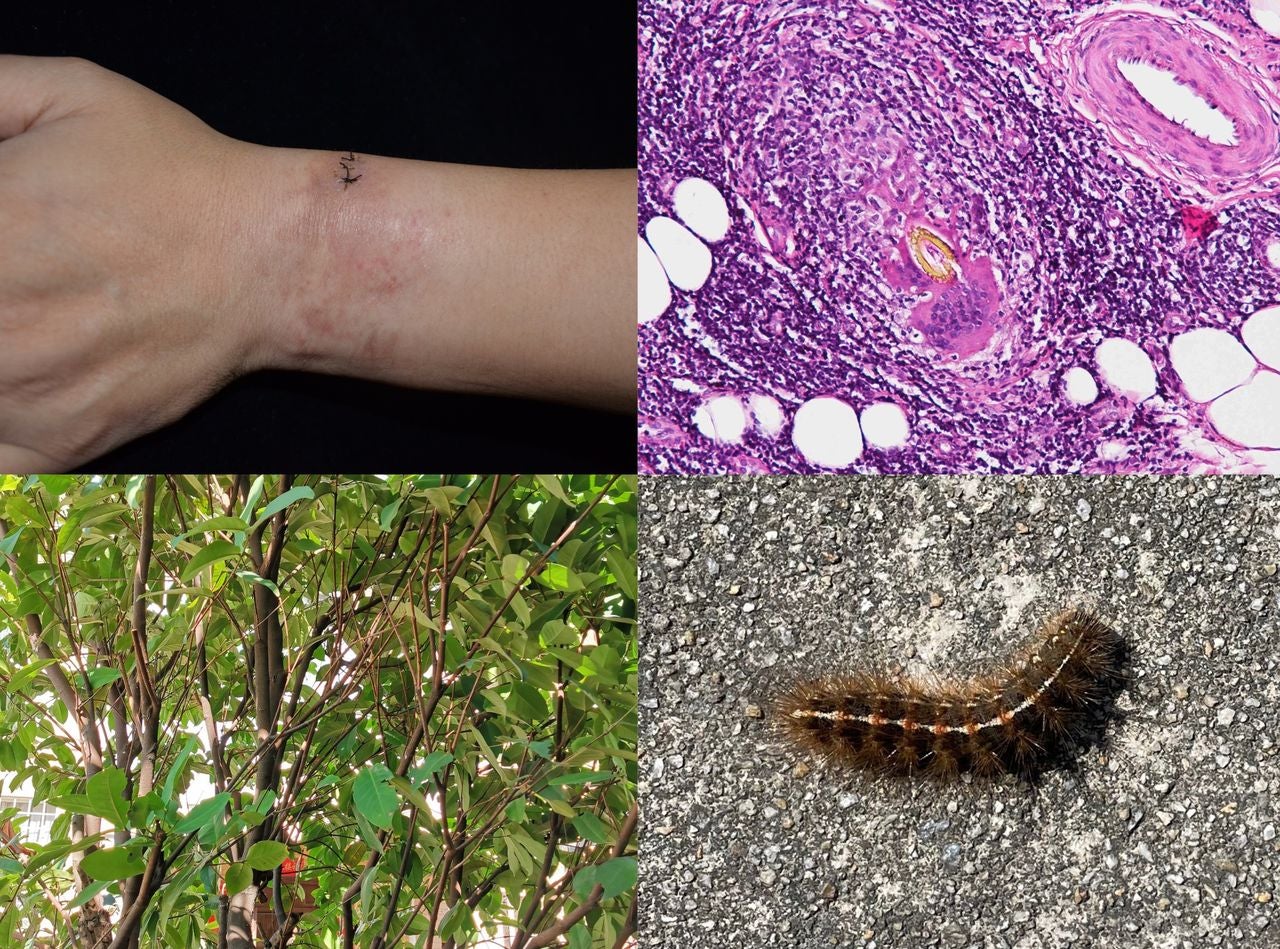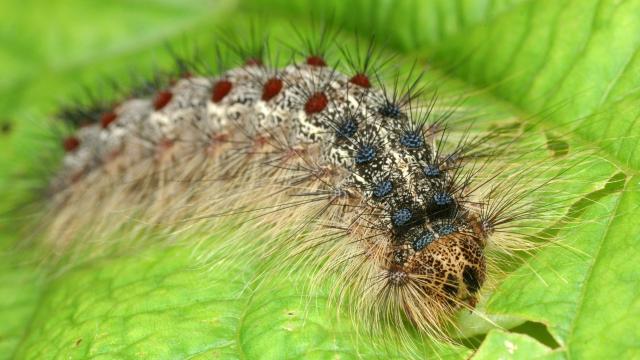A man’s suspected case of painful eczema on his left wrist turned out to be something much more unusual. Doctors in China discovered that their patient actually had caterpillar hairs lodged in his arm, likely caught while climbing an apple tree months earlier. Following a steroid injection, the man’s lesions cleared up.
The tale of the embedded caterpillar hairs was detailed last month in BMJ Case Reports. The man, said to be in his 50s, visited doctors after months of ongoing redness, bumps, and pain on his left wrist. He was initially diagnosed with eczema, a skin condition that can arise for many reasons, including allergies. Treatment with topical steroids and antihistamines didn’t help, though, so he was sent to the dermatology department of the First Affiliated Hospital of Fujian Medical University, where the authors of the new case report examined him.
When they looked at the man’s biopsied skin under a microscope, they noticed unique hollow structures with “refractory golden walls.” These objects were also surrounded by white blood cells, indicating that they were the cause of inflammation. After reviewing the man’s medical history and the literature, the doctors suspected that the structures were likely a caterpillar’s setae, or the hair-like bristles found along the outside of many species. The patient then confirmed their suspicions when he recalled that he might have bitten by an unknown insect as he was climbing up a wax apple tree five months ago. He also remembered that, while up there, he saw plenty of spongy moth caterpillars, previously known as gypsy moths (they had their common name changed recently to avoid the use of the derogatory term “gypsy.”)

Spongy moths are an invasive species in many parts of the world, the U.S. included, and they can periodically cause outbreaks of heavy leaf damage when their populations grow too large. Touching the hairs of their caterpillar stage of life has been known to cause itchy rashes, similar to those caused by poison ivy, though these rashes are usually short-lasting and go away on their own after a few weeks. But in this case, the hairs stuck in the man’s wrist had caused foreign body granulomas — masses of white blood cells that form around foreign material. The man had to be given additional steroid treatment, injected directly into the lesion, but afterward his symptoms finally went away.
Caterpillar-related injuries aren’t a common ailment that dermatologists encounter and document in their daily routines. So the authors of this study hope their report, complete with photos and images of the injury under a microscope, can help other doctors identify similar cases in the future. And all things considered, the man’s situation could have been way worse — in at least one case, a caterpillar’s hairs were sharp enough to puncture someone’s cornea.
